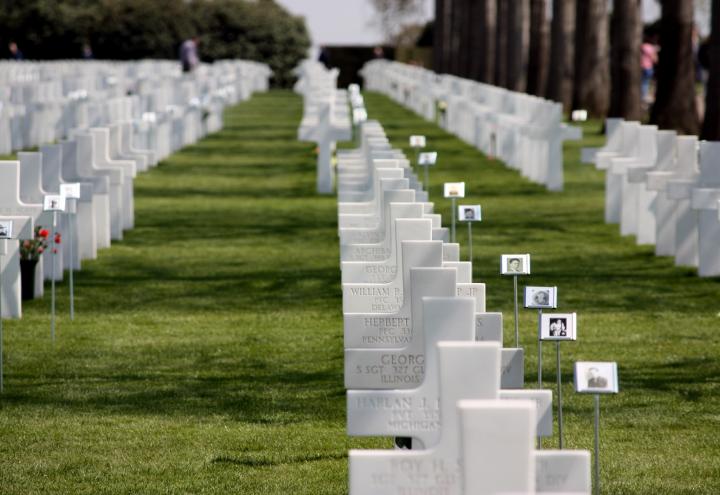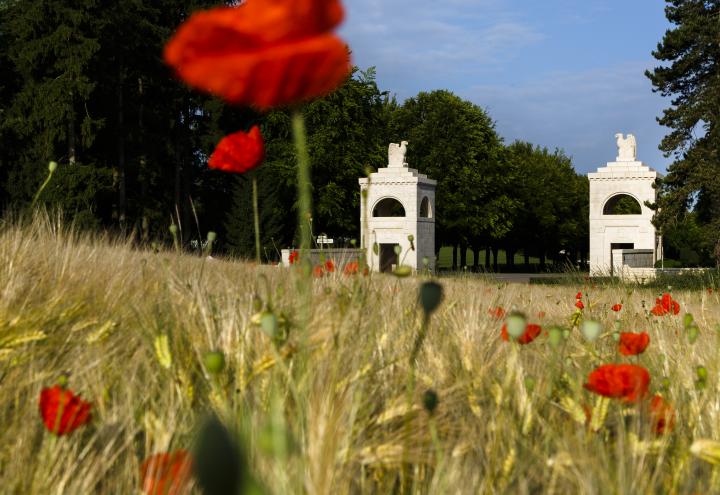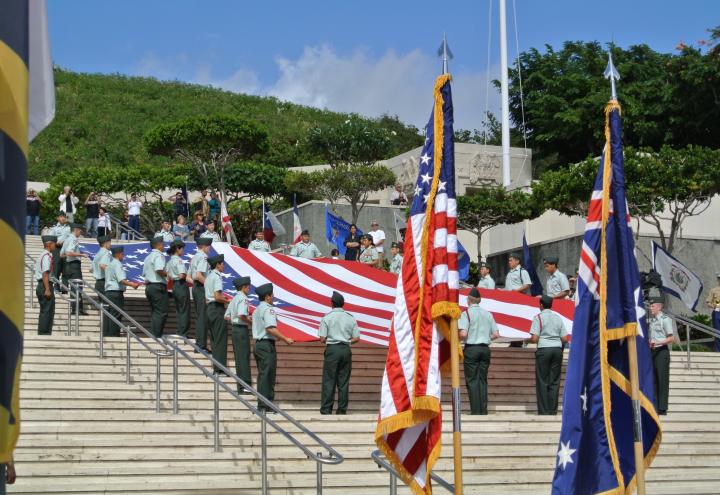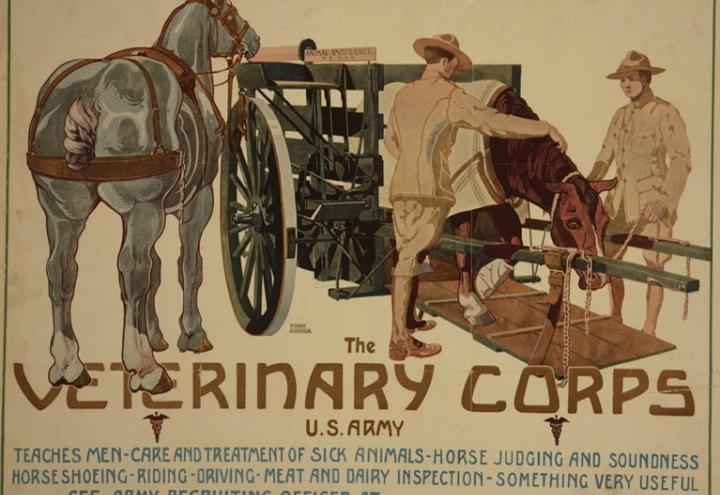The Lafayette Escadrille Memorial Cemetery is temporarily closed as of January 8, 2018 due to downed trees in the area. The site will be reopened as soon as it is determined safe for visitors.

Netherlands American Cemetery will host The Faces of Margraten May 2-6, 2018. Organized by the Stichting Verenigde Adoptanten Amerikaanse Oorlogsgraven (SVAAO), The Faces of Margraten works to bring a face to every person honored at Netherlands American Cemetery.

Driving through northern France today, it’s hard to imagine the brutal fighting that occurred 100 years ago. The pock-marked ground, barren landscape and trenches of World War I are now softened and hidden by time.

As a 12-year-old girl Marie-Thérèse Huppertz lived in the small Belgian village of Pepinster. In winter 1944, American soldiers arrived in her village needing places to stay.

In World War II, the Korean War and the Vietnam War, millions of Americans served far from home. In the various conflicts, service members fought in the waters of the Atlantic and Pacific. They traversed mountains in Italy, France, Korea and Vietnam.

Normandy American Cemetery and Pointe-du-Hoc are closed until further notice due to a winter storm. Please check back for updates.
Brittany American Cemetery Closed until further notice due to a winter storm that is impacting the region. Please check back for updates.
Renovations to the Chateau Thierry Monument are ongoing. As of December 21, 2017 nearly all of the renovation work is now restricted to the inside of the building. The outside of the monument and the parking lot are accessible.

When World War I began in 1914 armies still relied primarily on horses for transportation. War required hundreds of thousands of horses and mules to pull and pack artillery, supplies, cavalry, communications, medical, and engineering services.
